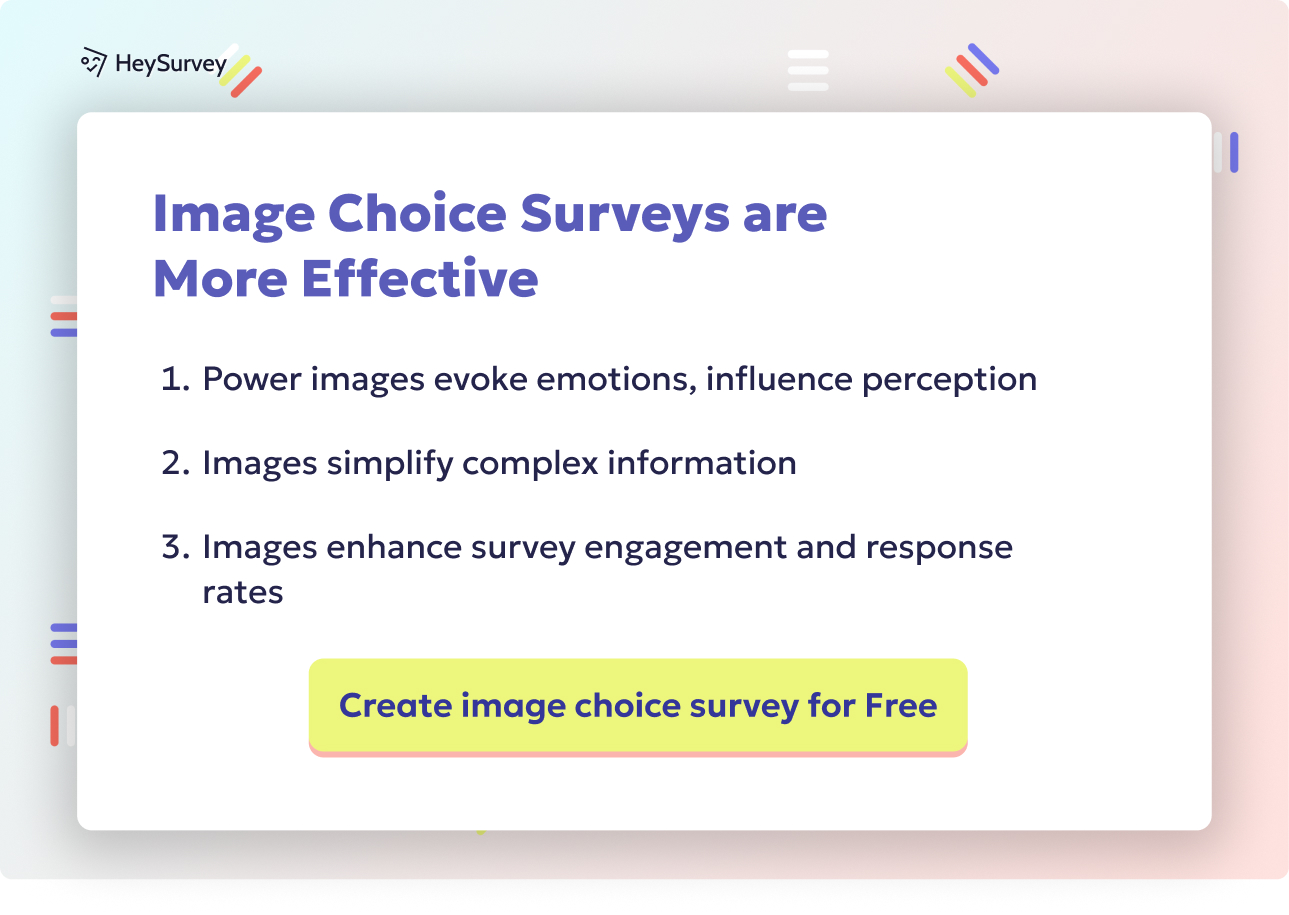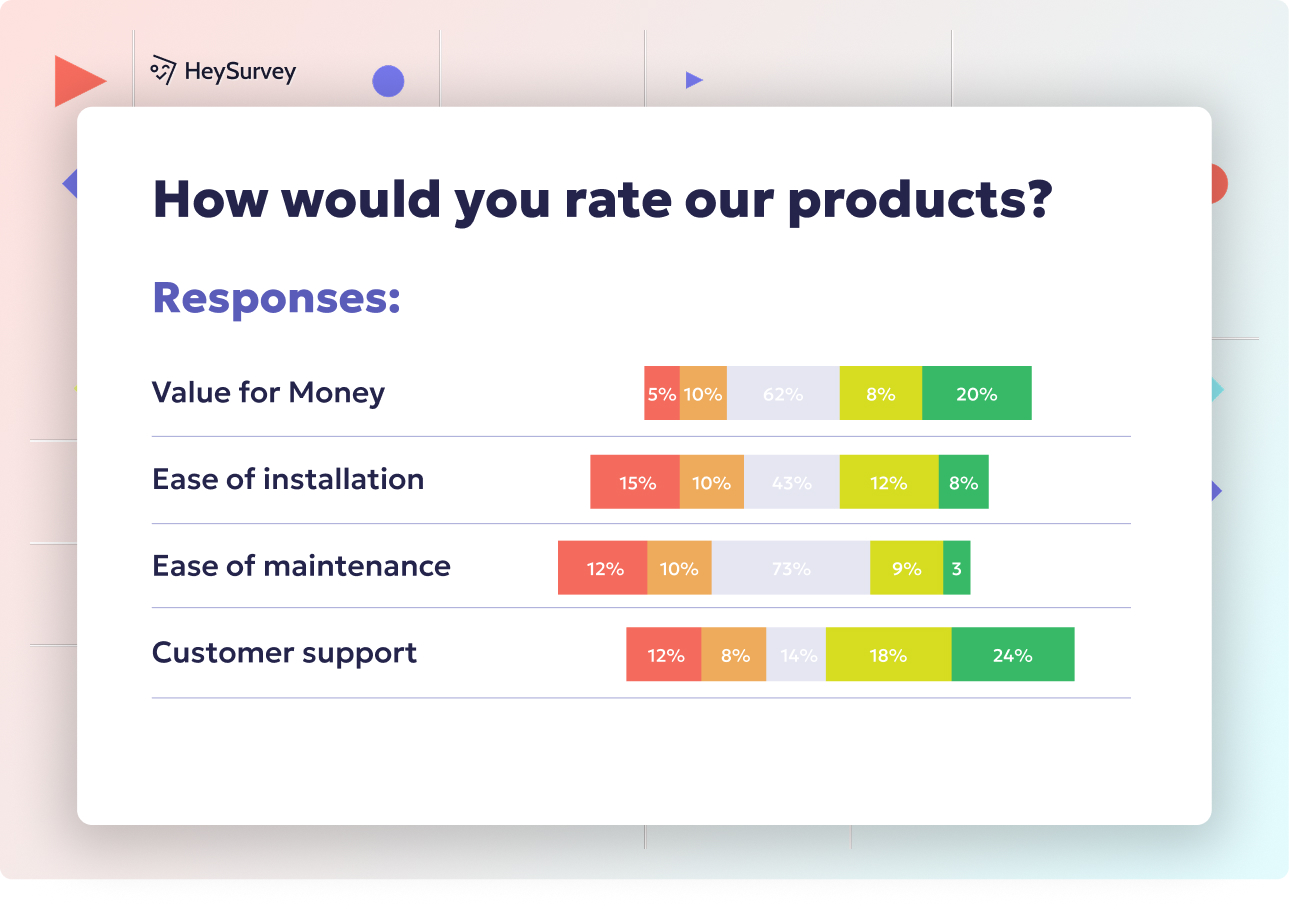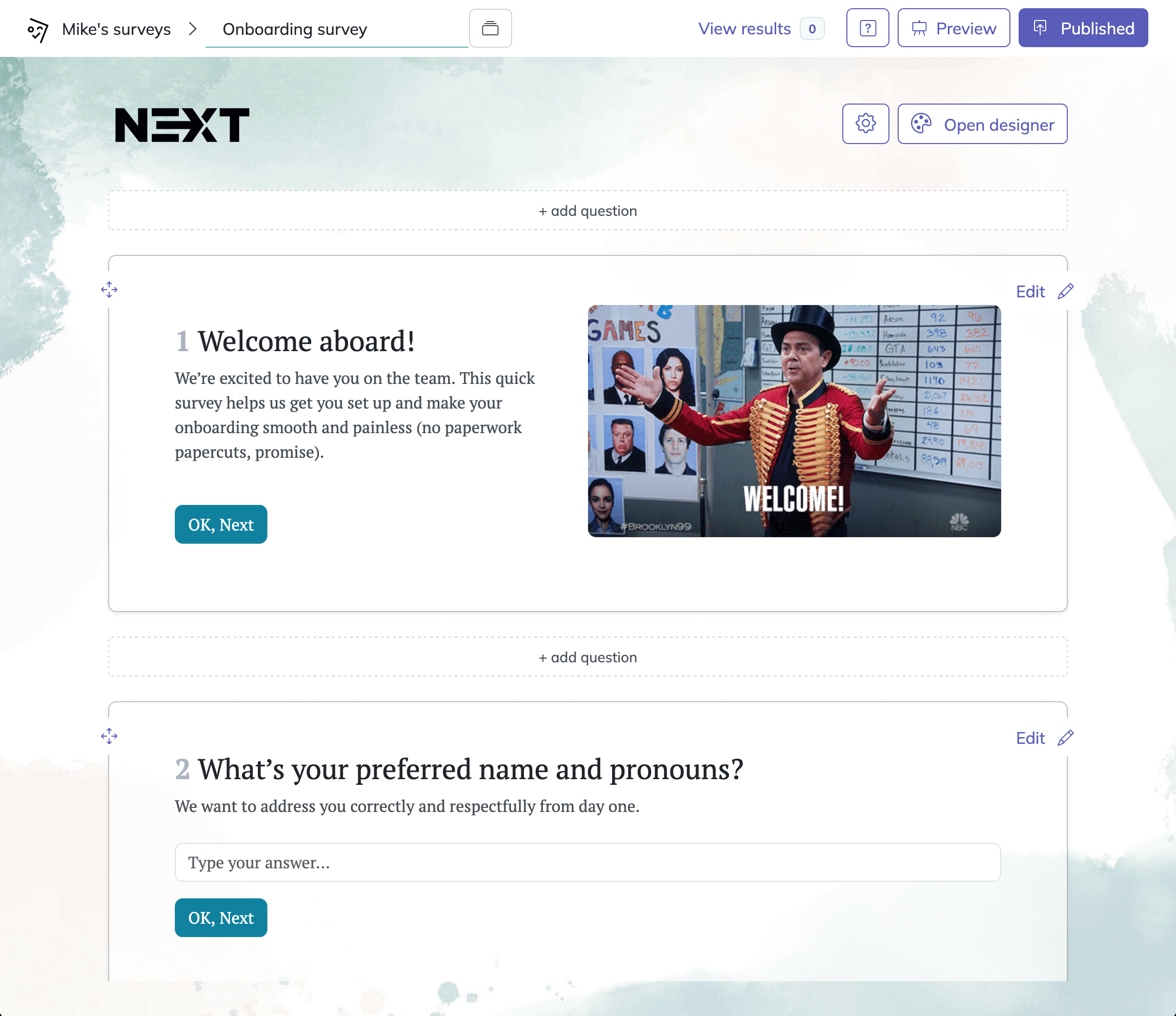31 Internal Communication Survey Questions to Boost Alignment
Discover 25+ internal communication survey questions with expert tips to boost employee feedback and improve workplace alignment and communication.
Internal communication surveys are the unsung heroes of workplace alignment, just as much as coffee is the unofficial fuel of the office. These surveys collect employee feedback on how information travels across teams, departments, and leadership. Whether your company is growing fast, integrating after a merger, or adapting to remote work, deploying internal communication survey questions uncovers opportunities to improve communication effectiveness. In this guide, you’ll discover seven types of internal communication surveys, each with actionable, proven questions and best-practice tips to boost workplace alignment (and maybe workplace happiness, too).
Internal Communication Pulse Survey
Why & When to Use
Think of a pulse survey as the organizational equivalent of stopping to check your pulse after running for the train—quick but vital. These short, recurring check-ins capture a real-time sense of how staff perceive company-wide communication. Pulse surveys should be sent out regularly—monthly is popular for fast-changing environments, while quarterly works for most.
Consistent feedback lets you spot sudden dips, gradual improvements, or sudden spikes in employee sentiment. That way, you’re never blindsided by a full-blown communication crisis. Results from pulse surveys guide everything from updating intranet platforms to tweaking meeting cadences. The beauty of the pulse approach is its ability to track trends over time, so small tweaks can be made before a problem becomes a productivity killer.
Launching a pulse survey is ideal during: - Leadership transitions - Organizational growth spurts - When rolling out new communication channels - After launching major employee initiatives
If your employee response rates start dropping, just adjust the survey length or frequency—nobody wants “survey fatigue” as the office mood.
5+ Sample Questions to Include
How clearly do you understand the company’s current priorities?
Rate how promptly you receive information needed to do your job.
How comfortable are you giving feedback about internal communications?
Which department communicates most effectively with you?
What one change would most improve company-wide communication?
Do you feel leadership listens to your communication concerns?
How would you describe the overall tone of company updates?
Effective internal communication significantly enhances employee engagement, fostering workplace relationships based on meaning and worth. (sciencedirect.com)

How to Create Your Internal Communication Survey with HeySurvey in 3 Easy Steps
Ready to capture valuable employee feedback using HeySurvey? Don’t worry if you’ve never built a survey before—here’s a quick guide to get you started smoothly. You can even jump straight into a pre-built template by clicking the button below when you’re ready!
Step 1: Create a New Survey
Head over to HeySurvey’s dashboard and click “Create New Survey.”
Choose how you want to start: either select a pre-built template tailored for internal communication surveys or start from scratch with an empty sheet if you prefer full creative control.
Give your survey a name that is easy to recognize internally, like “Internal Communication Pulse Survey – Q3” to keep things organized.
Once your survey is created, you’ll enter the Survey Editor, where all the magic happens.
Step 2: Add Survey Questions
Click “Add Question” at the top or between existing questions to start building your survey.
Pick the appropriate question type— for most internal communication questions, Choice (single or multiple select) and Scale questions (like rating clarity or comfort on a scale) work great.
Type your question text clearly, for example: “How clearly do you understand the company’s current priorities?” or “Rate how promptly you receive the information you need.”
Don’t forget to mark important questions as required so respondents can’t skip them by accident.
Explore adding descriptions below questions to provide context or examples if needed.
Use the branching feature if you want different follow-up questions depending on an answer (e.g., if someone says “No” to understanding priorities, you can ask what information would help).
Step 3: Publish Your Survey
Preview your survey anytime by clicking the Preview button to see exactly what respondents will experience.
When you’re happy with it, hit Publish to make the survey live.
Grab the shareable link to send to your employees via email, intranet, or chat.
Remember, you’ll need to have an account registered with HeySurvey to publish and later access the collected results.
Bonus Steps to Make Your Survey Shine
Apply Your Branding: Upload your company logo to the top corner for a professional look and to boost employee trust and engagement.
Define Survey Settings: Set start and end dates, cap response numbers if needed, add a thank-you page, or redirect respondents to a custom URL once they finish.
Use Branching to Personalize: Tailor the survey path based on responses so participants only see relevant questions, making the experience smoother and more respectful of their time.
Design with Style: Use the Designer Sidebar to tweak colors, fonts, backgrounds, and layouts. A visually appealing survey gets better response rates!
With these simple steps and options, even first-timers will feel confident providing employee feedback through a HeySurvey-powered internal communication survey. Ready to get started? Click below to open a template and try it out!
Leadership & Management Communication Survey
Why & When to Use
Ever played telephone with a hundred people? Now imagine doing it with critical business messages. Leadership and management communication surveys capture how effectively managers and executives communicate decisions, strategies, and motives down the chain. When a new leader steps in, the company rewrites its mission, or employee engagement takes a dive, it’s time to check how messages are trickling down (or not).
This survey spotlights whether employees sense transparency, clarity, and approachability from those at the top. It also reveals if teams feel inspired, confused, or somewhere in between by the latest memos and all-hands announcements. The feedback helps organizations learn if they’re empowering managers or accidentally creating a game of broken telephone.
Consider running this survey: - After a new CEO or departmental leader is introduced - Following major company announcements - If there’s a recurring rumor mill or disconnect - When regular strategy updates are scheduled
Improved clarity and transparency at all levels are the rewards of listening to employees’ views on leadership communications.
5+ Sample Questions to Include
My manager explains the “why” behind decisions.
Senior leadership communicates a clear, inspiring vision.
I receive timely updates on business performance from leaders.
Leadership is approachable for communication-related concerns.
How could leadership improve information flow?
Are important strategy shifts clearly linked to your role?
Do you feel leaders ask for your input regularly?
Effective leadership communication significantly enhances employee trust, with a 74-point trust gap between employees rating communication as excellent versus poor. (poppulo.com)
Channel & Tool Effectiveness Survey
Why & When to Use
If you’ve ever missed an urgent Slack ping because you were slogging through a 100-email inbox, you know channel overload can be real. This survey checks how well your maze of emails, intranet posts, group chats, town halls, and digital signs actually work for employees. Evaluate which tools are used, which are skipped, and which make staff want to run for the hills.
Deploy this survey after launching a flashy new communication app, or if you hear people complaining “we have too many tools!” It quickly pinpoints channels that work well and those that don’t. Plus, you’ll discover communication bottlenecks where information gets trapped rather than flowing freely.
Best moments to use a channel & tool effectiveness survey: - When introducing or retiring a comms tool - After a spike in complaints about information overload - Amidst inconsistency or confusion around announcements
Keeping the stack modern and effective means hearing directly from those who rely on it most.
5+ Sample Questions to Include
Which channel do you prefer for urgent updates?
Company emails are concise and easy to skim.
The intranet search function helps me locate resources quickly.
I experience information overload from multiple channels.
What channel should we introduce or retire?
How often do you use chat apps for day-to-day updates?
Are video town halls accessible and engaging?
Change & Transformation Communication Survey
Why & When to Use
Change is the only constant—unless we’re talking about your office playlist, which somehow has never updated. Whenever your organization embarks on a big transformation—like a merger, reorganization, or a shiny new software rollout—communication becomes mission-critical. This survey ensures that the “why, what, and how” of change lands with every employee.
The best time to deploy? At three key milestones: before rollout (to prep people), during (to troubleshoot in real time), and after (to celebrate wins and adjust for the future). A thoughtfully timed survey will illuminate where confusion leaks in, where anxiety is rising, or where people still have burning questions. This intelligence helps you tailor communications that make transitions as smooth as possible.
Ideal moments to use this survey: - At each stage of implementing major organizational change - After feedback sessions or Q&A town halls - When initiatives involve cross-functional teams
Feedback from transformation surveys is a secret weapon for nailing buy-in and smoothing rough edges.
5+ Sample Questions to Include
I understand how the change will impact my day-to-day work.
Leadership has communicated the benefits of this change convincingly.
I have opportunities to ask questions about the transformation.
Communication about timelines has been accurate so far.
What additional information would help you adapt?
Do you know where to find resources about the change?
How confident are you in the company’s approach to managing this transition?
Transparent internal communication during organizational change enhances employee engagement and commitment, facilitating smoother transitions. (pmc.ncbi.nlm.nih.gov)
Crisis & Emergency Communication Survey
Why & When to Use
Crisis strikes fast, but communication must move even quicker—that’s when this survey really shines. Whether it’s a power outage, data breach, or world-altering pandemic, reviewing your crisis communications strategy after the dust settles is non-negotiable. This survey uncovers whether emergency protocols, speed, and messaging worked for everyone in the heat of the moment.
The survey is best deployed shortly after a major incident, while fresh memories yield the most honest answers. Results feed directly into safety plans, communication scripts, and toolkits for the next inevitable surprise. Unlike other surveys, responses here shape both the “what” and the “how” for your crisis comms playbook.
Key situations to launch this survey: - After resolving a critical incident or emergency event - When simulating crisis scenarios for protocol review - If staff confusion or rumors were rampant post-incident
Consistent, actionable feedback becomes the backbone of a robust emergency communication plan.
5+ Sample Questions to Include
I received critical updates quickly during the crisis.
Instructions were clear and actionable.
Multiple channels delivered consistent information.
Rumors or misinformation were addressed promptly.
What improvements would you suggest for future emergencies?
Did you feel safe based on the communication received?
Was there someone to turn to for immediate help?
Remote & Hybrid Workforce Communication Survey
Why & When to Use
With teammates scattered between kitchen tables, conference rooms, and the occasional beach (hey, we see you), communication in remote and hybrid models is a whole different ballgame. This survey explores connection, information parity, and inclusivity for employees logging in from anywhere.
It’s perfect before or after shifting to hybrid work, or when you sense remote workers are tuning out. Identify gaps in meeting formats, struggles with time zones, or cultural disconnects that simmer quietly (like the feeling of missing out on snacks or watercooler buzz).
Trigger points for launching this survey include: - Ahead of a shift to hybrid or remote-first policies - When employee engagement drops in distributed teams - Regularly, as new collaboration tools are introduced
This isn’t just about making remote meetings less awkward—it’s about rebuilding company culture from every location.
5+ Sample Questions to Include
Virtual meetings keep me as informed as on-site colleagues.
Time-zone differences hinder my access to live communications.
I have the right digital tools to collaborate effectively.
Company culture is reflected in remote communication.
What would make hybrid communication more seamless?
Are you included in discussions regardless of your location?
Is the frequency of company updates sufficient for remote roles?
Cross-Functional Collaboration Communication Survey
Why & When to Use
If “who owns this?” is a question that echoes through your hallways, this survey is here to save the day. Cross-functional collaboration communication surveys assess information flows between departments and across project teams. They’re crucial before kicking off broad initiatives or after any collaboration trainwrecks that leave everyone pointing fingers.
Use this survey to see if goals are consistent, if information-sharing is speedy, and if duplication disappears. Often, companies find out that one hand doesn’t know what the other is doing—leading to surprises, delays, or worse, teams inventing wildly different solutions to the same problem.
Best moments to run this survey: - Prior to launching multi-team projects - After noticing friction or bottlenecks in inter-department collaboration - Periodically, to maintain high-performing cross-team dynamics
Clear, cross-team communication transforms joint projects from tug-of-war into smooth relays.
5+ Sample Questions to Include
I know who to contact in other departments when I need information.
Project goals are communicated consistently across teams.
There is minimal duplication of effort due to miscommunication.
Feedback loops between departments are timely.
How can we improve cross-team information sharing?
Are interdepartmental meetings effective and useful?
Do you receive proper recognition for your contributions to cross-functional projects?
Best Practices: Dos and Don’ts for Internal Communication Surveys
Survey best practices can make or break your feedback initiative. Getting them right means higher employee response rates and actionable insights that fuel data-driven communication plans.
Dos: - Use anonymous tools to promote honest answers. - Keep surveys short—aim for under 15 questions. - Close the feedback loop by sharing major findings. - Mix quantitative and qualitative questions for richer insights. - Test your survey on a small group first. - Schedule surveys with a regular cadence (monthly or quarterly). - Ensure mobile accessibility for on-the-go employees. - Thank employees for participating.
Don’ts: - Avoid leading questions that bias responses. - Don’t ignore open-ended feedback—it’s a goldmine. - Skip jargon and corporate-speak in your questions. - Never punish or single out teams based on survey data. - Don’t let results gather dust—act promptly. - Refrain from frequent, back-to-back surveys to prevent fatigue.
For optimal length, stick to surveys that take 5–10 minutes to complete. Frequency should match your goals—pulse check-ins can be monthly, in-depth reviews can be quarterly or post-major events.
Always follow up: - Share top-line results promptly. - Communicate planned actions based on survey data. - Set the date for the next survey, so employees know their voices matter.
Following these do’s and don’ts ensures every survey supports a data-driven communication strategy with real employee buy-in.
Conclusion – Turning Survey Insights into Action
Choosing the right types of internal communication surveys transforms employee feedback into big wins for communication effectiveness and workplace alignment. The real magic happens when you examine the data, update everyone on what you learned, and make tangible improvements before your next survey cycle. Don’t forget: every survey is a promise to listen and act.
Ready to unlock better alignment? Start crafting your own internal communication survey today and build a more connected team tomorrow.
Related Employee Survey Surveys

29 Essential Post Mortem Survey Questions for Project Success
Discover 25+ essential post mortem survey questions to improve projects, boost team morale, and d...

31 Change Readiness Survey Questions to Boost Your Success
Discover 25+ sample change readiness survey questions to assess attitudes, barriers, and confiden...

31 Retreat Survey Questions to Collect Actionable Feedback
Discover 26 essential retreat survey questions to gather actionable feedback before, during, and ...

